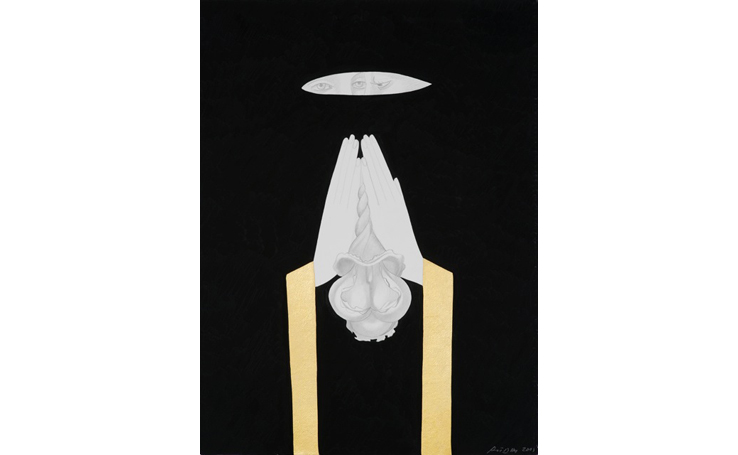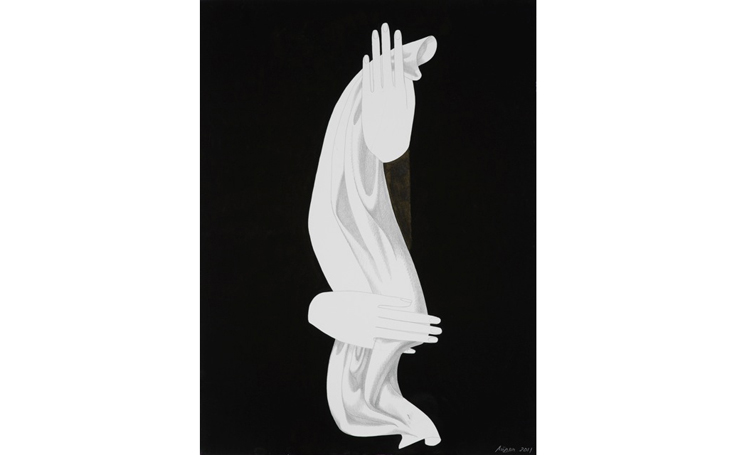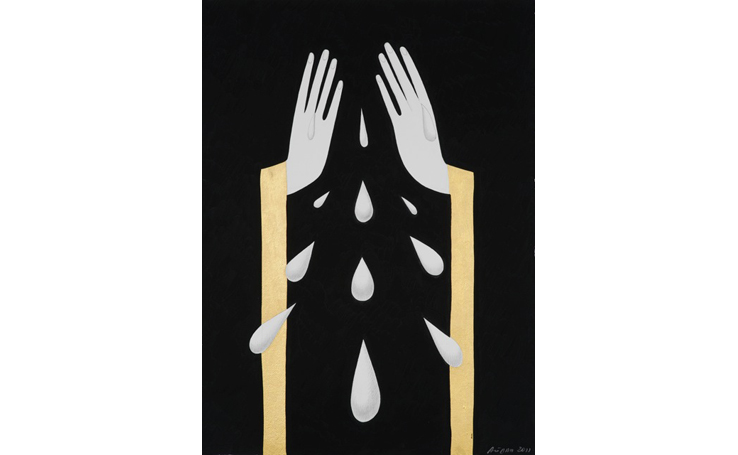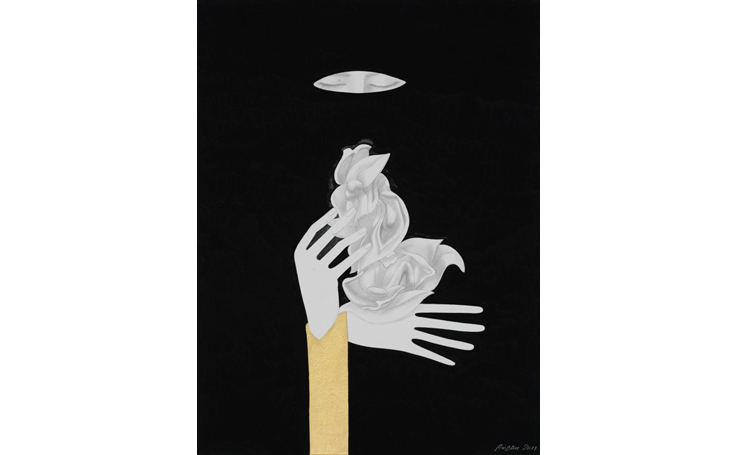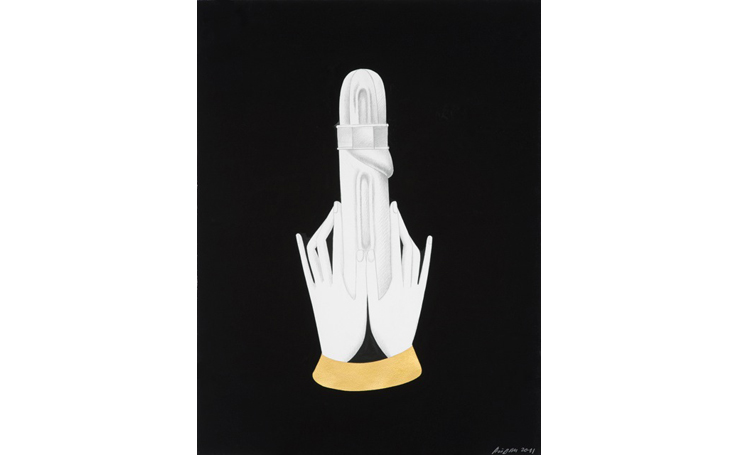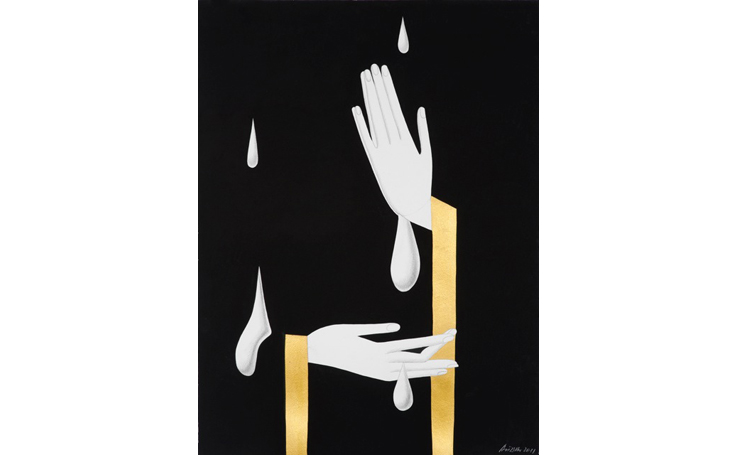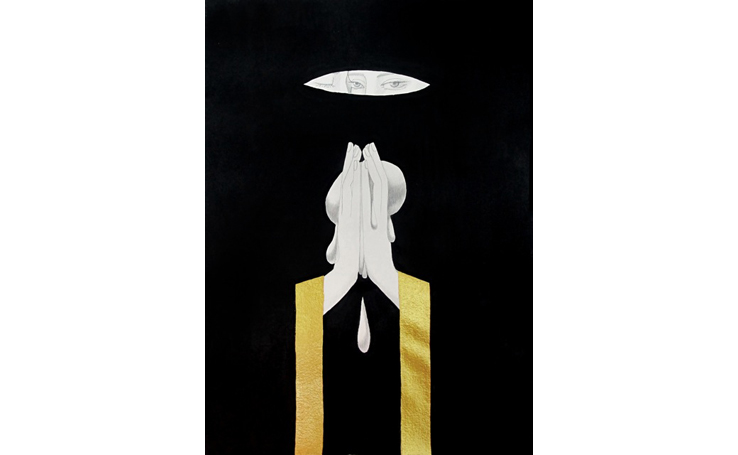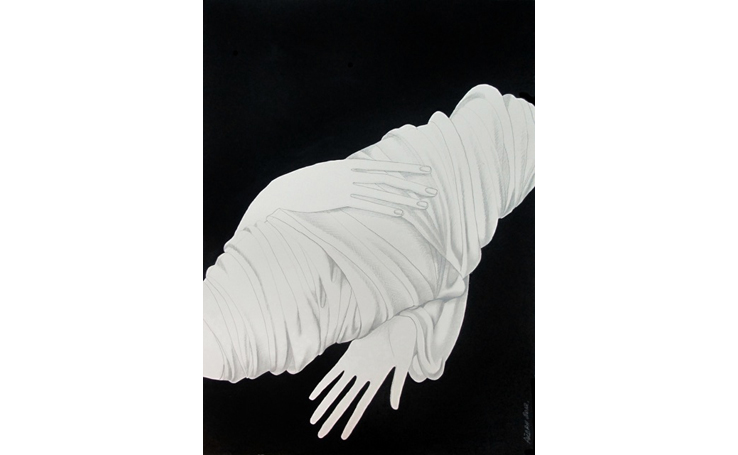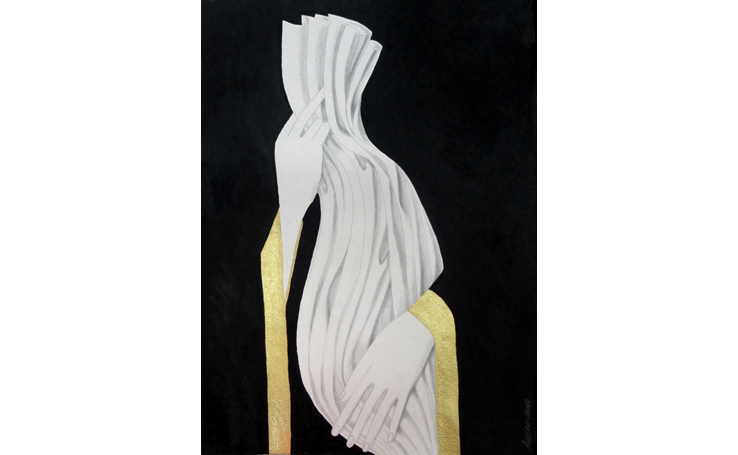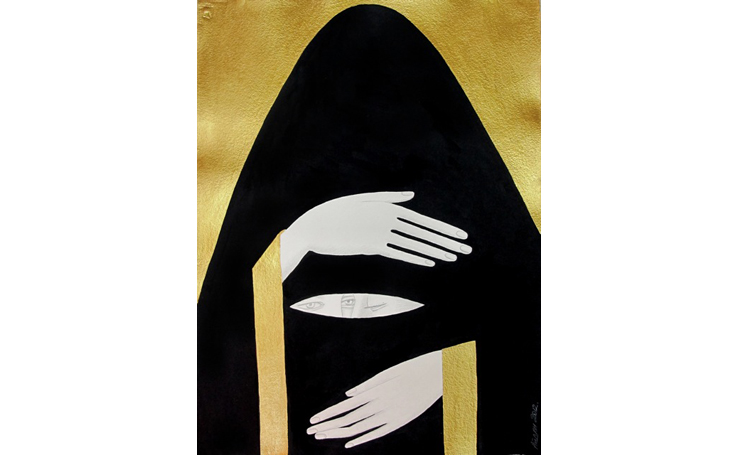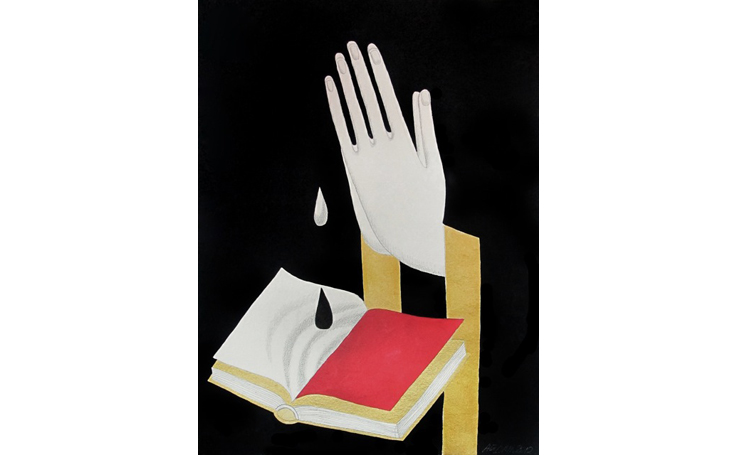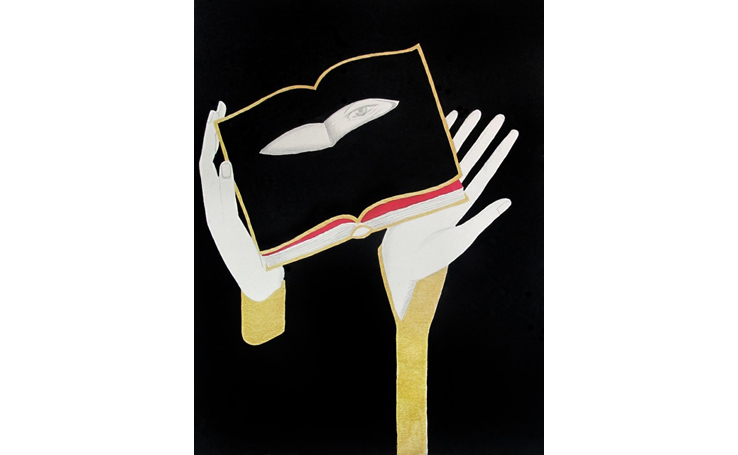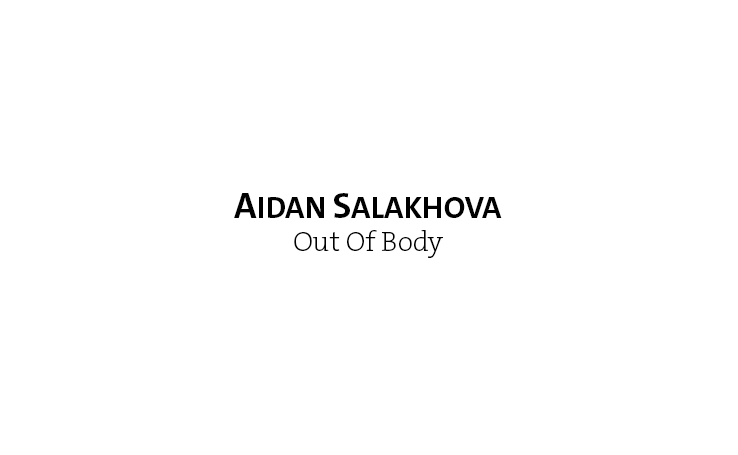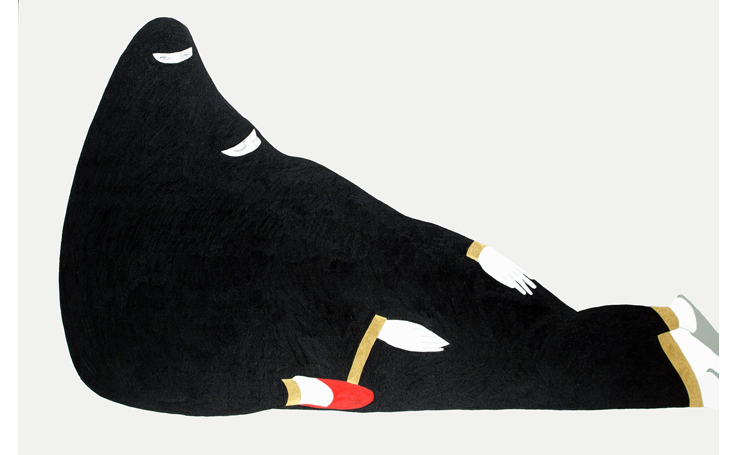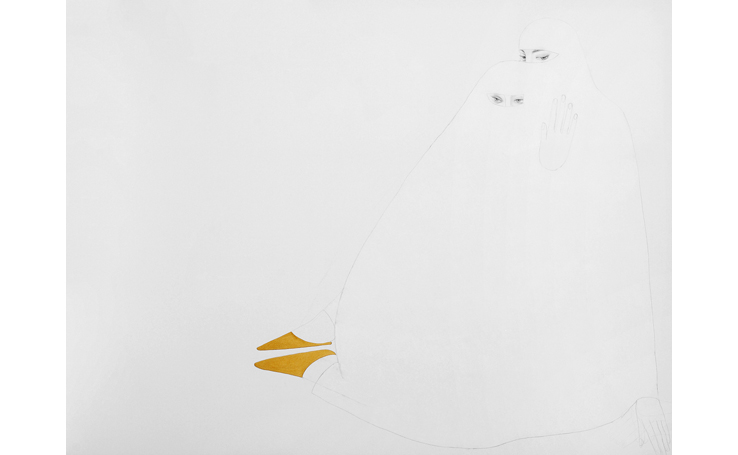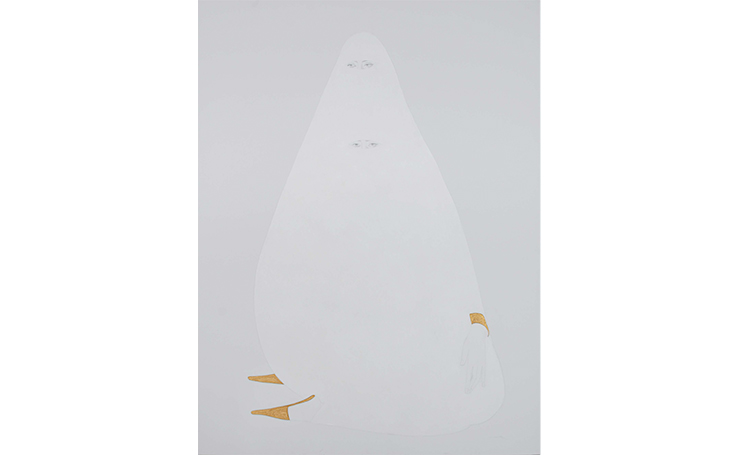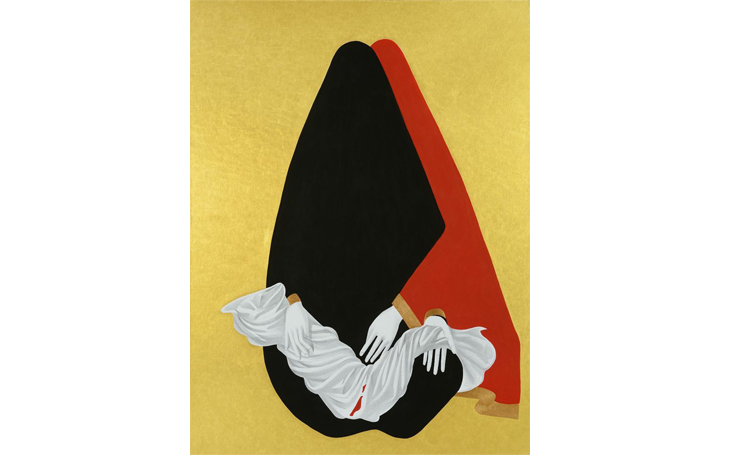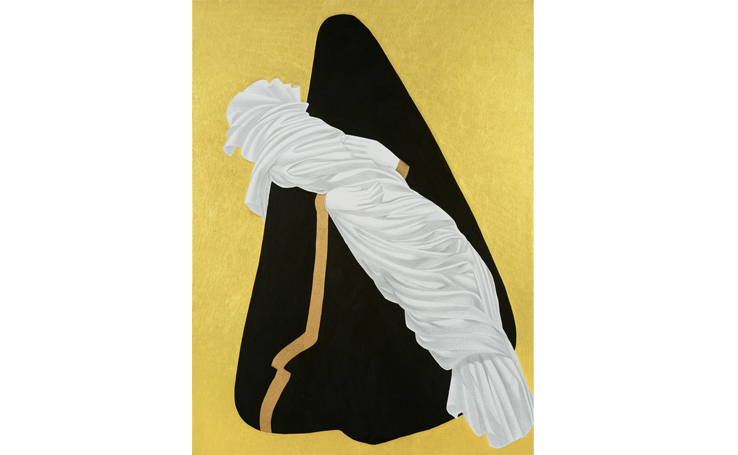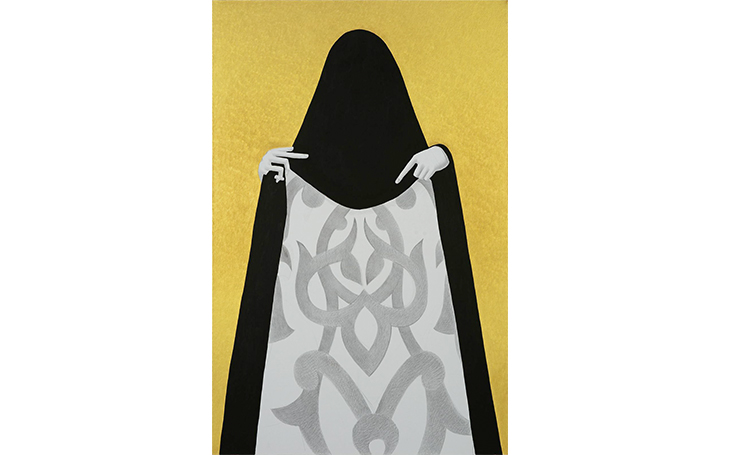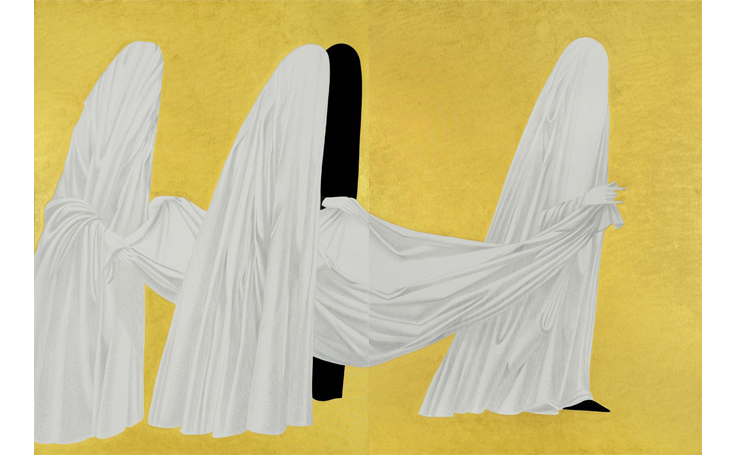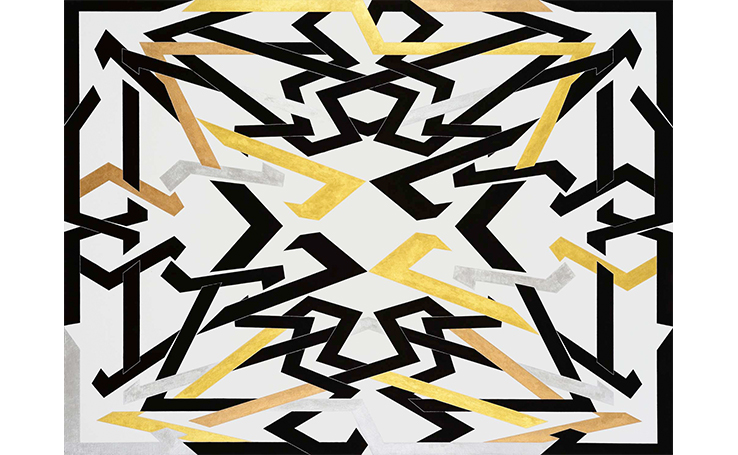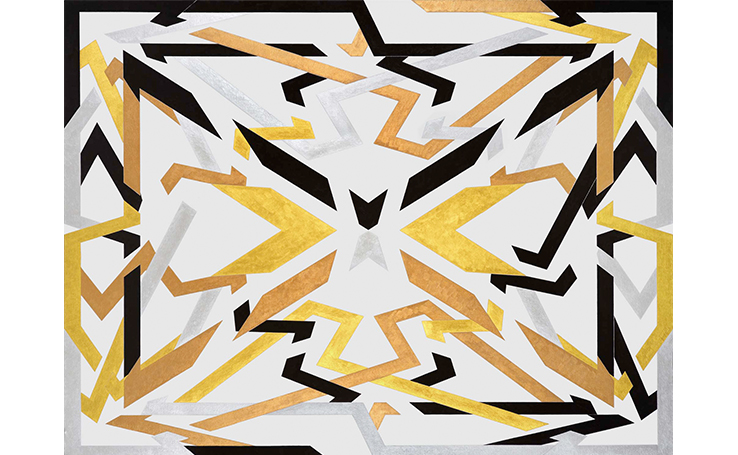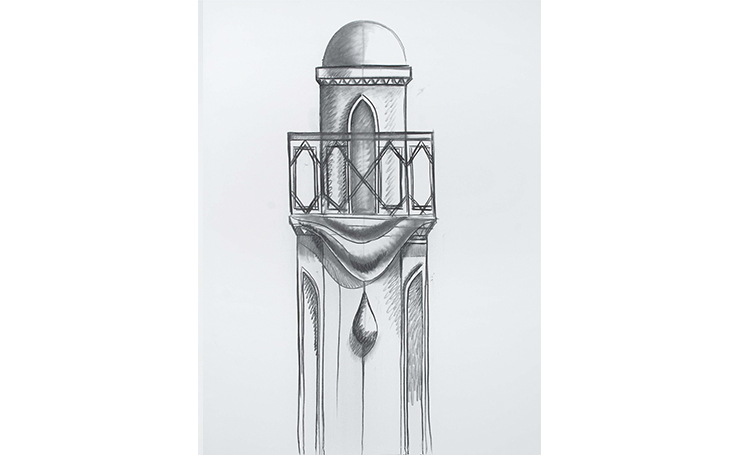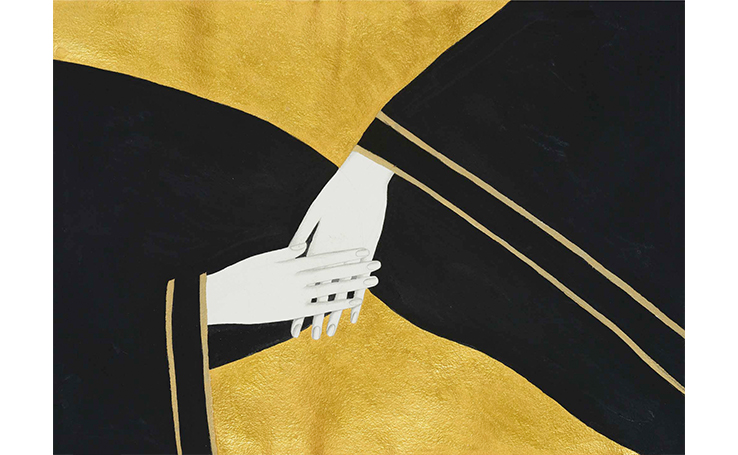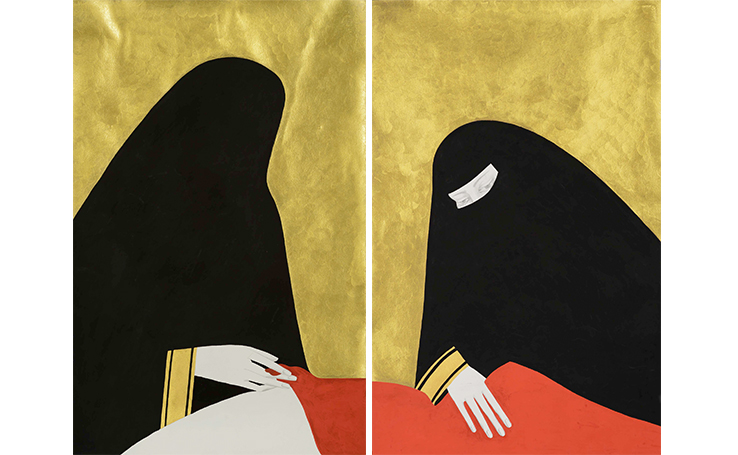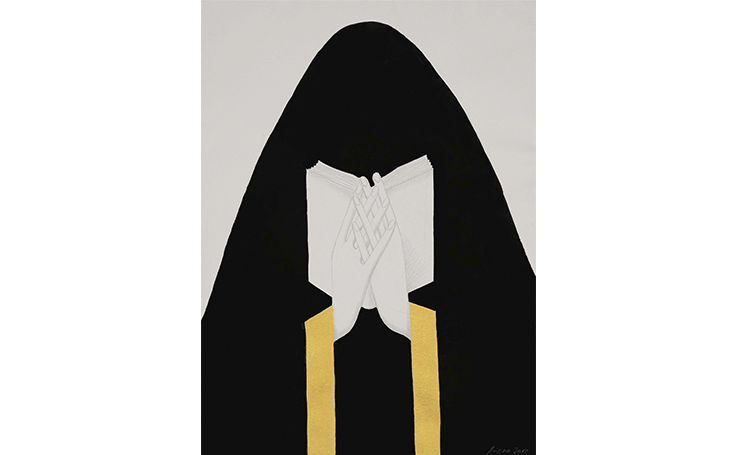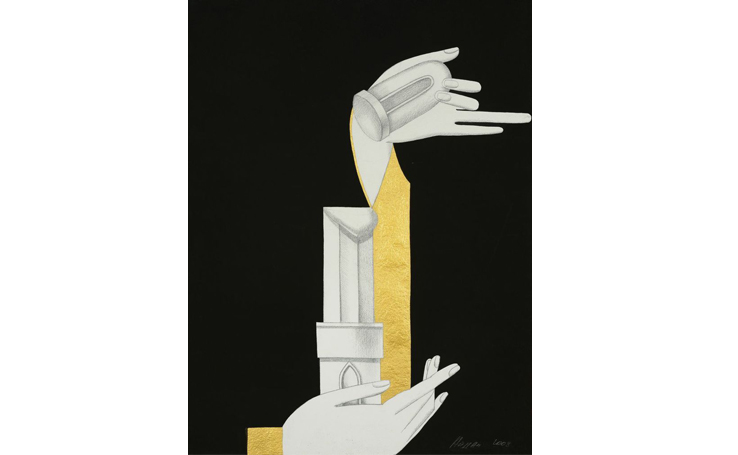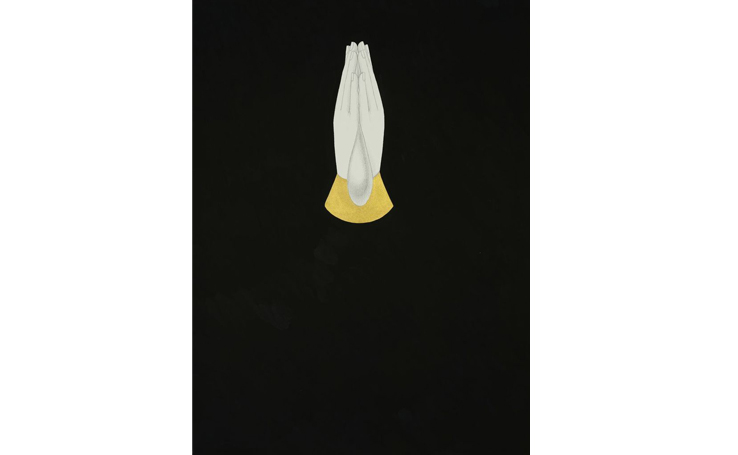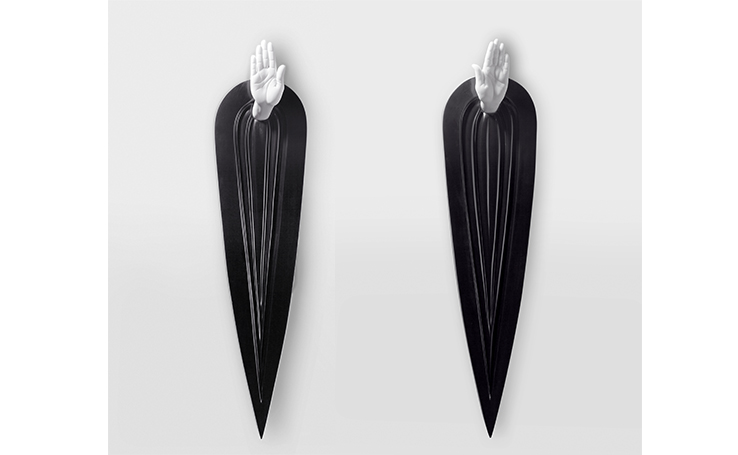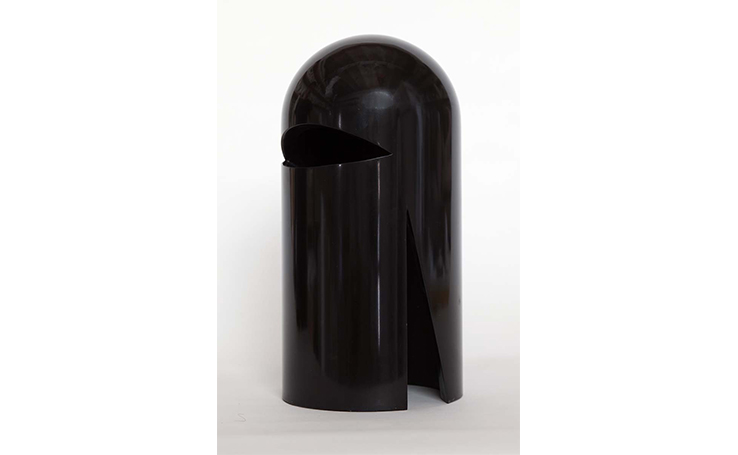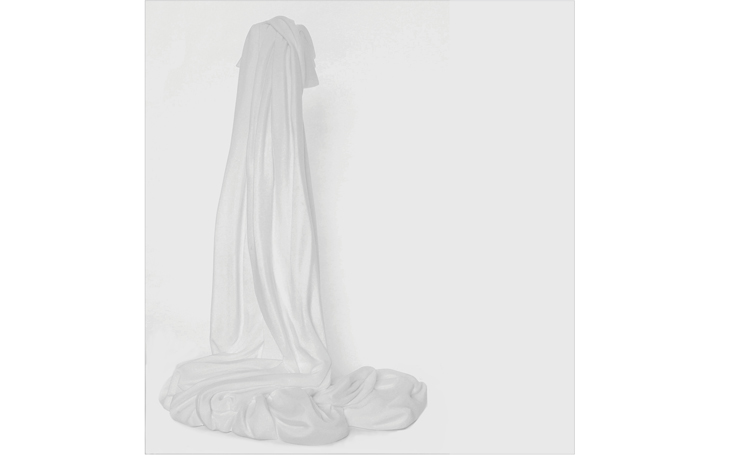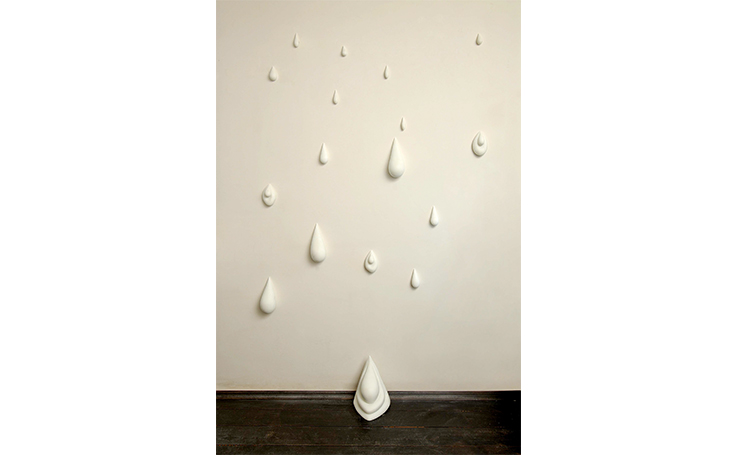
Aidan Salakhova marries Eastern Islamic with Western feminist influences, combining her Azerbaijani background with her Eastern European upbringing. Her “Persian Miniatures” series explores the feminine identity in an Islamic context.
Missing elements carry as much weight as those that are visualized. Feminine figures are delicately portrayed, with the male presence noticeably absent. The drawings are flat and their subjects anonymous, rendering them interchangeable and representational.
Her execution traces back to Persian miniatures from which the series takes its name. Her selection of this style is fitting, as Persian miniatures historically were private books, allowing artists to express themselves more freely than they would with more public wall art. Although these are typically executed in vibrant, vivid colors, Salakhova’s miniatures are more somber, as though carrying the strength and the weight of their subjects.
Highly semiotic, Salakhova’s work plays on the capability of representative imagery to represent a multitude of meanings, primary among which is women’s position within established social conventions. Her symbols are far from mundane, featuring images such as the gourd, a womb-like symbol of fertility. Also recurring is the minaret symbol, representing faith and power, as well as unity given its function as the location of the call to prayer. Water, a symbol of purity and life across a number of civilizations and religions is also an expression of tears as the inner emotional sea.
Aidan Salakhova was born in Moscow, Russia in 1964. She graduated from Suikov Art Institute in 1987 and later taught at the institute in 2000. In 2002 she was awarded a silver medal by the Russian Academy of Fine Arts and later, in 2006, she became an Academician of the Russian Academy of Fine Arts.
Salakhova has exhibited in many spaces including the Moscow Museum of Modern Art, the Moscow Museum of Contemporary Art, and recently in the Azerbaijan Pavilion in the 54th International Venice Biennale.












